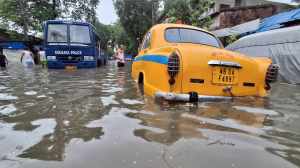When people have a direct say in resource allocation
In Nehru’s immortal words, India has a tryst with destiny. Its billion strong people are its most valuable resource. With their enterpr...

In Nehru’s immortal words, India has a tryst with destiny. Its billion strong people are its most valuable resource. With their enterprise, savvy, and skills, they are justifiably striding assuredly onto the world’s stage.
Yet, think what could happen if all of India’s people, including the poorest, those with disabilities, communities from backward castes and tribes, and above all women were truly empowered with a direct role in the management of resources? If they had the confidence to demand the quality of infrastructure and services they rightfully deserve, from the building blocks of education and health care, to the foundations of power, water and transportation, they could unleash an economic force so powerful that it would dramatically alter the face of India.
In the nearly sixty years since Independence, India has held steadfastly to its democratic traditions. Empowering all its citizens to ensure the efficient use of public funds and to hold their leaders accountable would deepen this further into a truly participatory democracy, unleashing the country’s vast untapped economic potential. Given the immense size and diversity of India, and the sheer scale of its challenges, strong participation at the grassroots is the only answer.
In the global knowledge economy of the twenty-first century, while nations are rapidly graying, India’s young—set to grow in numbers for many decades to come—can be a unique asset. But, before these young people can become productive citizens in the world of tomorrow, they must be fully empowered today. And a good education is undoubtedly the most powerful tool to do so.
While many more of India’s children now go to school, over 10 million primary age children still receive no schooling at all. Secondary school enrollment—at only about 35 percent—is lower than in countries at similar levels of development. And, while India can be justly proud of its world class educational institutions, many of its children receive instruction of far inferior quality.
The Government has made elementary education a fundamental right for every Indian child and has launched the nation-wide Sarva Shiksha Abhiyan to support this effort. But, ensuring that such a gargantuan system—the second largest in the world after China—actually delivers is a major challenge. One of the best ways to make sure that it does so is to empower parents and local communities with complete information about what is being spent and give them a voice in how schools function.
‘May you live for a hundred years,’ is a traditional Indian blessing. Good health clearly empowers. Yet, tragically, while modern medicine can easily fight diseases like diarrhea and malaria, many of India’s children are undernourished and needlessly die from preventable illnesses, keeping infant and maternal mortality rates stubbornly high. And, medical expenses are a major factor in driving Indian households further into poverty.
The answer lies partly in better health services—but also in better access to clean water, better nutrition, and better roads. And, in all these areas, experience suggests that improved service delivery will only be achieved if those affected have a direct say in how resources are allocated.
The Chinese say that women hold up half the sky. Yet, women and girls often have fewer opportunities, and almost half of India’s women cannot read or write. Empowering women can give them greater choice in determining how many children to have and when to have them, reducing fertility rates, and leading to well-nourished and better educated future generations. Projects in rural Andhra Pradesh, for example, have shown that when women from disadvantaged communities are given a voice, they are able to chart a bold new future for themselves and their families.
Although the country is rapidly urbanizing, the majority of India’s people still live in the villages. Despite large expenditures on rural development, the stubborn reality of rural poverty persists. Farmers are unable to demand an get better prices for their produce, and the poor have limited access to infrastructure, services, credit, and markets.
Changing the face of rural India means empowering the rural poor with the information and the market power that are the keys to increasing income. Thus, empowerment to me is the most important word in India’s development dictionary. India’s people are its strength. Once empowered, they will be able to better grasp today’s opportunities and enable a resurgent India to take its rightful place in the world.
Photos


- 01
- 02
- 03
- 04
- 05





























